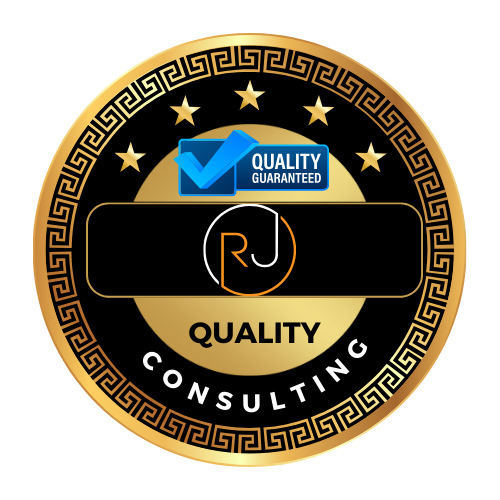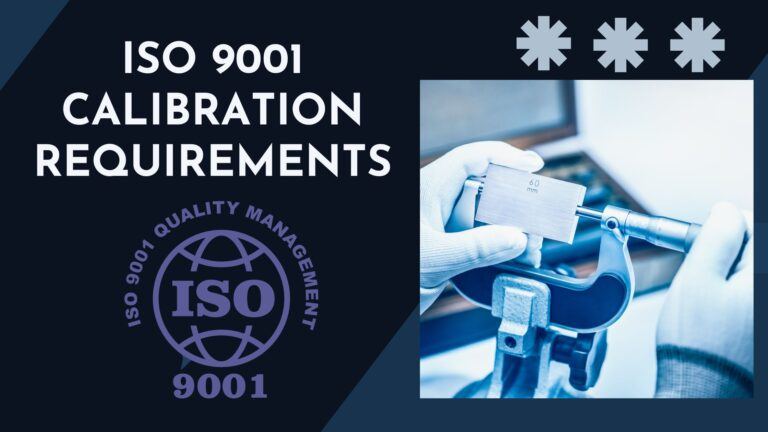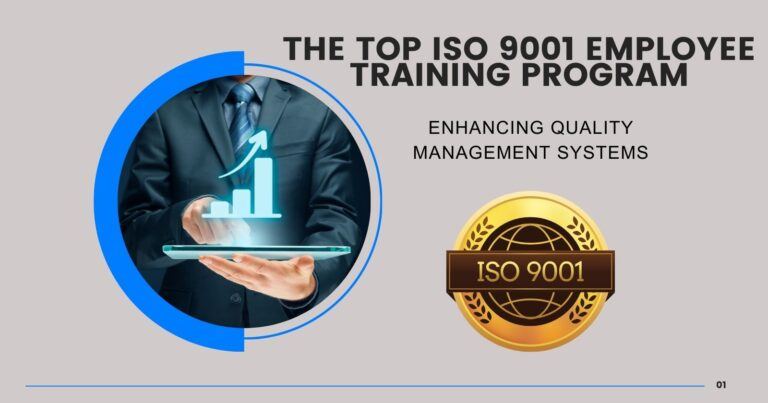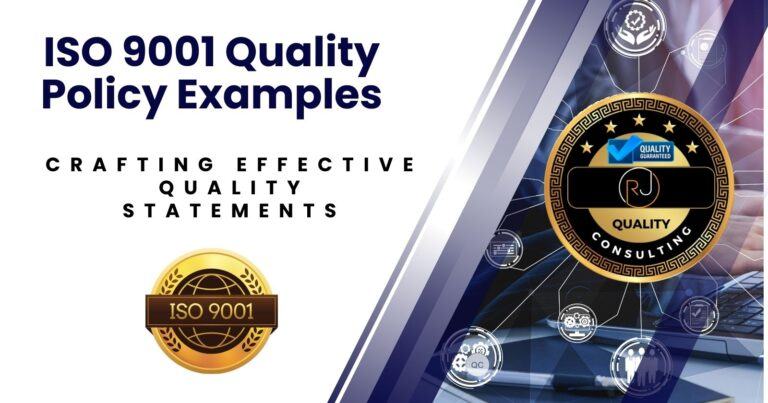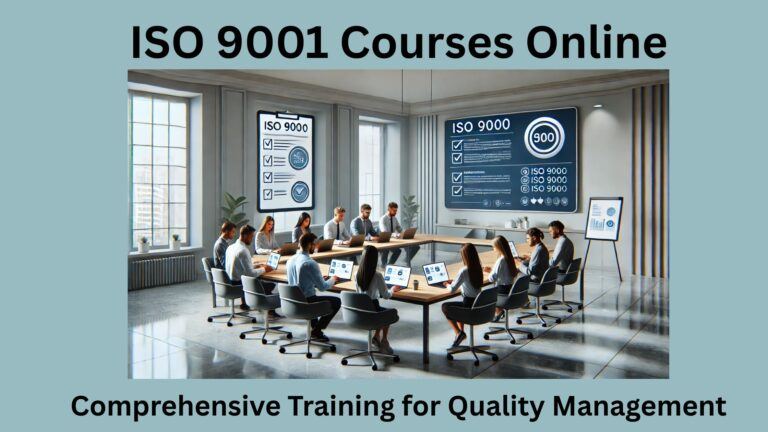ISO 9001 Audit Preparation Checklist: Essential Steps for Compliance
Preparing for an ISO 9001 audit can seem daunting, but having a well-structured checklist can ease the process significantly. A thorough ISO 9001 audit preparation checklist helps ensure our Quality Management System (QMS) meets all necessary requirements and identifies areas for improvement. By focusing on key areas such as audit planning, internal audits, and compliance, we can streamline the preparation process.

Effectively preparing for an ISO 9001 audit involves reviewing and aligning our current processes with ISO 9001:2015 standards. This is where the ISO 9001 audit preparation checklist comes into play. This preparation includes documenting procedures, training staff, and conducting internal audits to identify and address any gaps. Such meticulous preparation not only fosters compliance but also drives continual improvement within our organization.
Internal audits play a crucial role in the preparation process. They allow us to systematically evaluate our operations, ensuring we consistently meet ISO 9001 standards. This proactive approach supports strong audit outcomes and enhances our organization’s overall quality and performance.
Check Out Our Great Selection of ISO 9001 Online Training Courses
Looking to master ISO 9001:2015 or ensure top-notch training for your team? Explore our Online Courses here!
Key Takeaways
- A preparation checklist ensures the QMS meets ISO 9001 standards.
- Internal audits are essential for identifying and resolving gaps.
- Thorough documentation and staff training streamline the audit process.
Understanding ISO 9001 and Its Importance

ISO 9001:2015 is an internationally recognized standard for Quality Management Systems (QMS). By adhering to this standard, organizations demonstrate their commitment to fulfilling customer requirements and promoting continuous improvement. The ISO 9001 audit preparation checklist is utilized in order to prepare for certification to this recognized standard.
Key Principles of Quality Management Systems
ISO 9001:2015 is built on several core principles. One key principle is customer focus, emphasizing the need to meet customer needs and strive for their satisfaction.
Leadership is another essential element, ensuring that top management is involved in setting the quality policy and maintaining a culture of quality within the organization.
Engagement of People encourages involving everyone in the organization, utilizing their abilities to improve the QMS.
Process Approach focuses on understanding and managing interrelated processes for coherent functioning.
Continuous Improvement underscores the importance of always seeking ways to enhance QMS effectiveness.
Lastly, evidence-based decision making and relationship management help in maintaining quality through informed decisions and effective collaboration with stakeholders.
Benefits of Implementing ISO 9001
Implementing ISO 9001:2015 provides several benefits. Organizations often see an increase in customer satisfaction due to improved quality products and services. Not to mention a potential increase in the overall bottom line. Yes, using the ISO 9001 audit preparation checklist to create a QMS that is driven by these principles can increase the company’s overall profit margin.
Compliance with this standard also leads to better operational efficiency, as processes are clearly defined and streamlined. this, of course, reduced waste.
Enhanced employee engagement results as everyone understands their roles in maintaining quality.
Additionally, certification can open doors to new markets since many industries or clients require suppliers to have ISO 9001 certification.
Lastly, the focus on continuous improvement means that organizations are always looking for ways to better their processes, products, and services, leading to long-term success.
Developing an ISO 9001 Audit Preparation Checklist Strategy

Proper preparation is essential to executing effective ISO 9001 audits. By clearly defining both the audit objectives and scope while also meticulously planning and scheduling, we can ensure thorough and systematic internal audits.
Defining Audit Objectives and Scope
First, we must pinpoint our audit objectives. These are the goals we aim to achieve with the audit, such as verifying compliance, identifying areas for improvement, or validating the effectiveness of our Quality Management System (QMS).
Next, we define the scope of the audit. The scope outlines the coverage and boundaries, specifying which departments, processes, and activities will be audited.
A well-defined scope ensures we do not overlook any critical areas and that each section of the QMS is evaluated properly.
Key Elements:
- Clear objectives
- Comprehensive scope
- Focus on departments, processes, and activities
With these elements in place, our audit becomes more directed and efficient.
Audit Planning and Scheduling
Planning is fundamental to our audit’s success. We start by developing an overall plan that aligns with the audit’s objectives and scope. This plan should be detailed, covering all aspects from initial preparation to final reporting.
Next, we create a schedule. Scheduling involves setting specific timelines for each phase of the audit, including preparation, execution, and follow-up activities.
By creating a timeline, we ensure that all necessary activities are completed within the planned period and that resources are allocated efficiently.
Key Steps:
- Develop a thorough audit plan
- Set a comprehensive schedule
- Allocate resources and responsibilities effectively
Effective planning and scheduling pave the way for a smooth and efficient audit process.
Laying the Groundwork for a Successful Audit

Establishing a solid foundation for an ISO 9001 audit requires a thorough review of documentation and ensuring auditors possess the necessary competence and training.
Management System Documentation Review
We begin by organizing and reviewing our Quality Management System (QMS) documents. Key documents to scrutinize include the Quality Manual, Procedures, Work Instructions, and Records.
Ensuring these documents are current and comply with ISO 9001 standards is crucial. We also verify that our documented information accurately reflects our processes and is readily available for auditors.
Aligning our documentation with the clauses of ISO 9001 (from 4 to 10) helps in a comprehensive review.
Roles, Competence, and Training of Auditors
Assigning the right auditors is essential. We select individuals who are well-versed in the QMS and the specific requirements of ISO 9001.
We evaluate their competency through certifications, training, and experience. It’s important to provide continuous training and updates about any changes to the ISO 9001 standards to maintain their awareness.
By doing so, we ensure our auditors are equipped to conduct thorough and effective audits.
Areas of Focus for Internal Auditing

When conducting an internal audit for ISO 9001, it’s essential to concentrate on several critical areas. We emphasize evaluating organizational context, leadership commitment, risk-based thinking, planning effectiveness, and the verification of operational processes.
Assessment of Organizational Context and Leadership
Evaluating the context of the organization is a fundamental part of our audit. We must verify that the organization has identified both internal and external issues that can impact its Quality Management System (QMS). It’s crucial to ensure that stakeholders’ needs and expectations are well understood and addressed.
Leadership plays a pivotal role in the QMS. We assess whether top management demonstrates commitment by ensuring quality policies are properly implemented and aligned with strategic direction. We also examine whether leadership promotes a culture that supports the achievement of quality objectives.
Evaluating Risk-based Thinking and Planning
Risk-based thinking is integral to ISO 9001. We focus on how effectively risks and opportunities are identified, assessed, and managed. This involves reviewing risk management processes, ensuring they are proactive rather than reactive.
In terms of planning, we evaluate how well the organization plans changes and manages resources to meet quality objectives. It’s vital to confirm that planning processes consider all relevant risks and opportunities, ensuring continuous improvement and customer satisfaction.
Verification of Operations, Production and Service Provision
We thoroughly examine the operation to ensure that it meets the set requirements. This includes reviewing how products and services are designed, developed, and delivered. We check for consistency and compliance with ISO 9001 standards throughout the production and service provision stages.
Additionally, we look at how the organization controls its operational processes. This includes assessing resource management, process monitoring, and product/service quality checks. Our goal is to verify that the operational activities align with the quality management system’s requirements and lead to satisfactory customer outcomes.
Operational Aspects of Conducting the Audit

We will examine key operational aspects crucial for a successful ISO 9001 audit. These include the methods and techniques to execute an audit, the process of gathering and evaluating evidence, and the importance of reporting and follow-up.
Executing the Audit: Methods and Techniques
Executing an ISO 9001 audit involves a series of well-defined methods and techniques aimed at evaluating the Quality Management System (QMS) effectively.
Firstly, we need to create a comprehensive audit checklist. This checklist ensures every critical aspect of the QMS is scrutinized. Using structured questionnaires and interviews with employees, we gather qualitative data.
Process observation is another essential method. This involves observing day-to-day operations to see if the processes align with documented procedures.
Document reviews help identify discrepancies between the QMS documentation and actual practices. By combining these techniques, we create a robust framework for audit execution.
Gathering and Evaluating Evidence
Gathering and evaluating evidence is crucial to assess compliance with ISO 9001 requirements.
Documentation such as procedures, records, and audit trails serve as primary sources of evidence. Interviewing staff members also provides valuable insights into how effectively QMS processes are implemented.
We compare this gathered evidence against the internal audit checklist to identify any gaps or non-conformities. Objective evidence must be factual and unbiased, ensuring reliable audit results.
Evaluation methods like cross-referencing documents and verifying data accuracy help us assess the QMS comprehensively. Effective evidence gathering and evaluation ensure an accurate portrayal of the organization’s compliance status.
Audit Reporting and Follow-up
The final step in the audit process is reporting and follow-up. The audit report documents findings, non-conformities, and areas of improvement.
We generate the audit report, which includes checklist results, evidence summaries, and identified discrepancies. The report must be clear, concise, and actionable.
Follow-up activities ensure identified non-conformities are addressed. We establish a timeline for implementing corrective actions and track progress. Both the audit report and follow-up actions play a critical role in continuous improvement, maintaining compliance and enhancing the quality management system.
Reviewing Audit Findings and Implementing Changes

In the process of reviewing audit findings and implementing changes, we must focus on identifying nonconformities and opportunities for improvement, developing effective corrective actions, and leveraging management reviews for continual improvement.
Identifying Nonconformities and Opportunities
Identifying nonconformities is a crucial step in the audit process. Nonconformities are deviations from the ISO 9001 standards or organizational procedures. We should document each nonconformity clearly, detailing the specific clause of ISO 9001 that is not being met.
In addition to nonconformities, we should also pinpoint opportunities for improvement. These are instances where the organization can enhance its processes beyond merely fixing nonconformities. For example, streamlining a production process to increase efficiency or improving training programs to enhance employee performance.
Developing and Monitoring Corrective Actions
Once nonconformities and opportunities for improvement are identified, the next step involves developing corrective actions. Corrective actions are steps taken to eliminate the causes of nonconformities and to prevent their recurrence. Each corrective action should address the root cause of the issue, not just the symptoms.
We should create a detailed plan that specifies what actions will be taken, who is responsible, and the deadline for completion. Monitoring the implementation of corrective actions is essential to ensure they are effective. Regular follow-ups and reviews help in tracking the progress and making necessary adjustments.
Management Review and Continual Improvement
Management review plays a vital role in the ISO 9001 audit process. During the management review, top management evaluates the audit findings, assesses the effectiveness of corrective actions, and makes decisions on further improvements. This review should be documented and include assessments of key performance indicators, audit results, and feedback from stakeholders.
Continual improvement is an ongoing effort to enhance processes, products, or services. By systematically reviewing audit findings and implementing changes, we create a culture of continuous improvement. This not only helps maintain ISO 9001 compliance but also drives the organization towards excellence.
Preparing for External Audits and Certification
Preparation for external audits and certification involves both understanding the fundamental differences between internal and external audits and ensuring compliance with ISO 9001 requirements.
Differences Between Internal and External Audits
Internal audits are conducted by our own organization to evaluate and improve our Quality Management System (QMS).
Key Features of Internal Audits:
- Conducted by internal staff
- Aimed at identifying nonconformities and areas for improvement
- Less formal and can be continuous
External audits, on the other hand, are performed by third-party auditors to validate our compliance with ISO 9001 standards.
Key Features of External Audits:
- Conducted by independent auditors
- Focused on certification requirements
- Determine our eligibility for certification
Understanding these differences helps us better prepare and align our internal processes with the certification criteria.
Ensuring Compliance for Certification
To ensure compliance for certification, it’s crucial to conduct thorough internal audits using an ISO 9001 audit checklist.
Compliance Steps:
- Gap Analysis: Identify gaps between current practices and ISO 9001 requirements.
- Documentation Review: Verify that all necessary documentation is complete and up-to-date.
- Management Review: Ensure that the management team regularly reviews and acts on audit findings.
Additionally, all nonconformities identified during internal audits must be addressed before the external audit.
Areas to Focus On:
- Corrective Actions
- Training and Awareness
- Continuous Improvement
By following these steps, we can ensure our QMS meets the stringent criteria set forth by ISO 9001, making the external audit process smoother and more successful.
Maintaining and Improving the QMS using the ISO 9001 Audit Preparation Checklist
Efficient QMS maintenance and improvement is pivotal for ongoing compliance and achieving higher standards of quality. Our focus will be on monitoring performance and involving management actively.
Monitoring QMS Performance and Effectiveness
We need a systematic approach to evaluating QMS performance. Regular internal audits help us identify both strengths and weaknesses in our Quality Management System.
We utilize Key Performance Indicators (KPIs) to measure various aspects such as customer satisfaction, product quality, and operational efficiency. These metrics provide actionable insights.
Additionally, periodic reviews should be conducted to assess if our QMS aligns with ISO 9001 requirements. We also rely on feedback gathered from both internal teams and external stakeholders to pinpoint areas needing improvement.
Monitoring tools such as dashboards and balanced scorecards can offer visual insights into performance data. Utilizing these tools ensures we capture real-time information for quick decision-making.
Role of Management in Sustaining QMS Integrity
Management’s role in maintaining the QMS is critical. Leaders must ensure that quality objectives align with the organization’s strategic goals.
We encourage a culture of quality through ongoing training and engagement activities. This helps staff understand their role in maintaining QMS integrity.
Management reviews are essential. These periodic evaluations allow leaders to make informed decisions about resource allocation and process adjustments, based on performance data.
Leadership must also facilitate open communication channels, fostering a collaborative environment where feedback is actively sought and utilized. This ensures continuous improvement.
Our management team’s commitment to upholding QMS standards underscores the importance of quality at every organizational level, ensuring our processes remain robust and effective.
Supplementary Aspects of the Audit Process
We need to ensure our infrastructure, work environment, communication, and record-keeping are efficient and robust. Our organizational knowledge and resources also play a pivotal role.
Handling the Infrastructure and Work Environment
The infrastructure and work environment must support quality objectives and ensure employee safety and productivity. This includes office spaces, production facilities, equipment, and IT systems.
Regular maintenance schedules should be in place. Equipment must be calibrated and serviced as per guidelines. The work environment should meet industry standards for cleanliness, safety, and ergonomics. This ensures that employees can perform their duties without unnecessary interruptions or risks.
Inadequate infrastructure or a poor work environment can lead to non-compliance issues. We should regularly assess these elements through internal audits and update them as needed.
Ensuring Proper Communication and Record-Keeping
Effective communication channels ensure that information flows seamlessly within the organization. We need to establish clear protocols for internal and external communication. Key points include:
- Designating responsible personnel for different types of communication.
- Utilizing both formal reports and informal check-ins.
- Implementing reliable communication technologies.
Record-keeping is equally crucial. Accurate records ensure traceability and accountability. These include audit reports, training records, and corrective action reports. We must secure records to prevent unauthorized access or loss. Digital record-keeping systems can enhance accessibility and efficiency.
Understanding Organizational Knowledge and Resources
Organizational knowledge involves the expertise and information critical to our operations. This includes documented procedures, employee expertise, and historical data. We should establish a knowledge management system to capture and distribute this knowledge.
Resources encompass financial, human, and physical assets. Allocating these resources efficiently is vital for audit preparation and performance. Regular training sessions keep our team updated on the latest standards and practices.
By managing our organizational knowledge and resources well, we can adapt to changes and improve our processes continually. This ensures we meet and exceed ISO 9001 requirements.
Frequently Asked Questions
Effective preparation and organization are crucial for a smooth ISO 9001 audit process. Here, we address common questions to help streamline your efforts and ensure compliance.
What is ISO?
ISO (International Organization for Standardization) is an independent international organization that develops standards to ensure quality, safety, and efficiency across various industries. These standards help businesses improve processes, meet customer expectations, and comply with regulations, making them globally recognized for enhancing credibility and performance.
How can I effectively prepare for an ISO 9001 audit?
We start by conducting a thorough review of our Quality Management System (QMS) to identify gaps. Training our staff on audit protocols and creating a detailed audit plan with timelines helps us stay organized.
What are the essential elements to include in a comprehensive ISO 9001 audit preparation checklist?
Our checklist must cover Clauses 4 to 10 of the ISO 9001:2015 standard. This includes requirements like context, leadership, planning, support, operations, performance evaluation, and improvement. Ensuring all these areas are addressed helps us maintain compliance.
What is the best way to organize an ISO 9001 internal audit?
We find it effective to use a systematic approach. Allocating specific sections of the checklist to different team members ensures all parts are thoroughly covered. Holding regular meetings to discuss progress keeps everyone aligned.
Which documents are crucial for completing an ISO 9001 audit?
Key documents include our QMS manual, process maps, and records of management reviews. We also need to have evidence of training records, internal audit reports, and corrective action logs readily available for review.
How frequently should ISO 9001 internal audits be conducted?
Regular internal audits are essential. Although the standard doesn’t specify a fixed interval, we typically perform internal audits annually. This frequency helps us identify areas for improvement and ensure ongoing compliance.
What strategies can be employed to ensure compliance during an ISO 9001 audit?
We focus on continuous improvement and employee engagement. Encouraging feedback and regularly updating our QMS based on audit findings helps us stay compliant. It’s also vital to stay informed about any changes in ISO standards and incorporate them into our processes.
